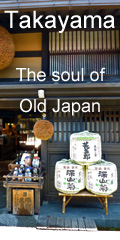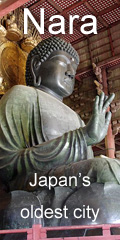| Japanese History |
|---|
|
| | Timeline |
|---|
|
|








|
|
 Samurai figures depicted at the Nebuta Matsuri in Aomori
Samurai figures depicted at the Nebuta Matsuri in Aomori
Written by Maciamo in October 2005 - last updated in October 2015
Did you know that...
- The word samurai (侍) means servant or attendant. The Japanese more commonly use the term bushi (武士, warrior) to refer to samurai. Samurai warriors described themselves as followers of "The Way of the Warrior" or Bushidō (武士道).
- Samurai, farmers and merchants had to wear different clothes during the Edo period (1603-1867).
- The reason why the samurai class shaved their the top of their heads is for helmet to fit more easily when they go into battle. From the Meiji period (1868-1912), the samurai were prohibited to wear swords, armours and helmets, and the hair-style lost its significance. It became widely adopted by the lower class who wished to imitate the former warrior class.
- The code of the samurai formalized in the Bushidō extols virtues such as calmness, fairness, justice, propriety, frugality, loyalty, mastery of martial arts, and honor to the death. Under this ideal, if a samurai failed to uphold his honor he could only regain it by performing seppuku (ritual suicide by disembowelment).
- The Bushidō was developed during the peaceful Edo period when the samurai had become mostly state administrators, writers and artists and most of them had never fought in battle. It became an idealized and romanticised version of the code of honour of the true samurai that preceded them. The chivalresque values of protecting the weak and fighting for the emperor arised during that peaceful period. Before that, the samurai were more selfish and brutal, and often did not hesitate to sacrifice their own family members to preserve their personal honour.
- Samurai could occasionally be female. Samurai status was inherited by all descendants (male and female) of samurai, and women samurai were expected too fight fiercely to protect their village/town while the men had left. Female warriors were known as onna-bugeisha and their weapon of choice was the naginata (polearm).
- Homosexuality was not uncommon among samurai. The word did not exist in Japanese, and such kind of man ot man love was more common than love relationship between spouses. Marriage among the samurai class were always political alliance, and male samurai were advised to sleep with their sword, to protect themselves... from their wives !
- Ikebana (Japanese flower arrangement) was seen as a martial art, as it helped the samurai to concentrate his mind on a single object.
- Samurai battles were typical a series of one to one fights. They cut their opponent's head as a proof of their victory. Samurai would perfume their hair with incense to make it more pleasant for their enemies.
- Ninja were typically samurai too. Instead of fighting for their honour, they operated in the utmost secrecy, in exchange for money.
- Samurai could not frequent entertainment (read "prostitutes") districts (but did anyway).
- A few Westerners who settled in Japan in the 17th and 19th centuries became samurai. The first among them was English sailor and adventurer William Adams (1564–1620), whose exploits are recounted in Giles Milton's book Samurai William: The Englishman Who Opened Japan. Other Western samurai include Dutchman Jan Joosten van Lodensteijn (1556?–1623?), who arrived in Japan with Adams, and French Navy officer Eugène Collache (1847-?), who fought in the Boshin War (1868–1869) for the restoration of the Meiji Emperor.
| Featured book |
|---|
 
|

| Featured book |
|---|
 
|
Popular Content on Wa-pedia.com
|